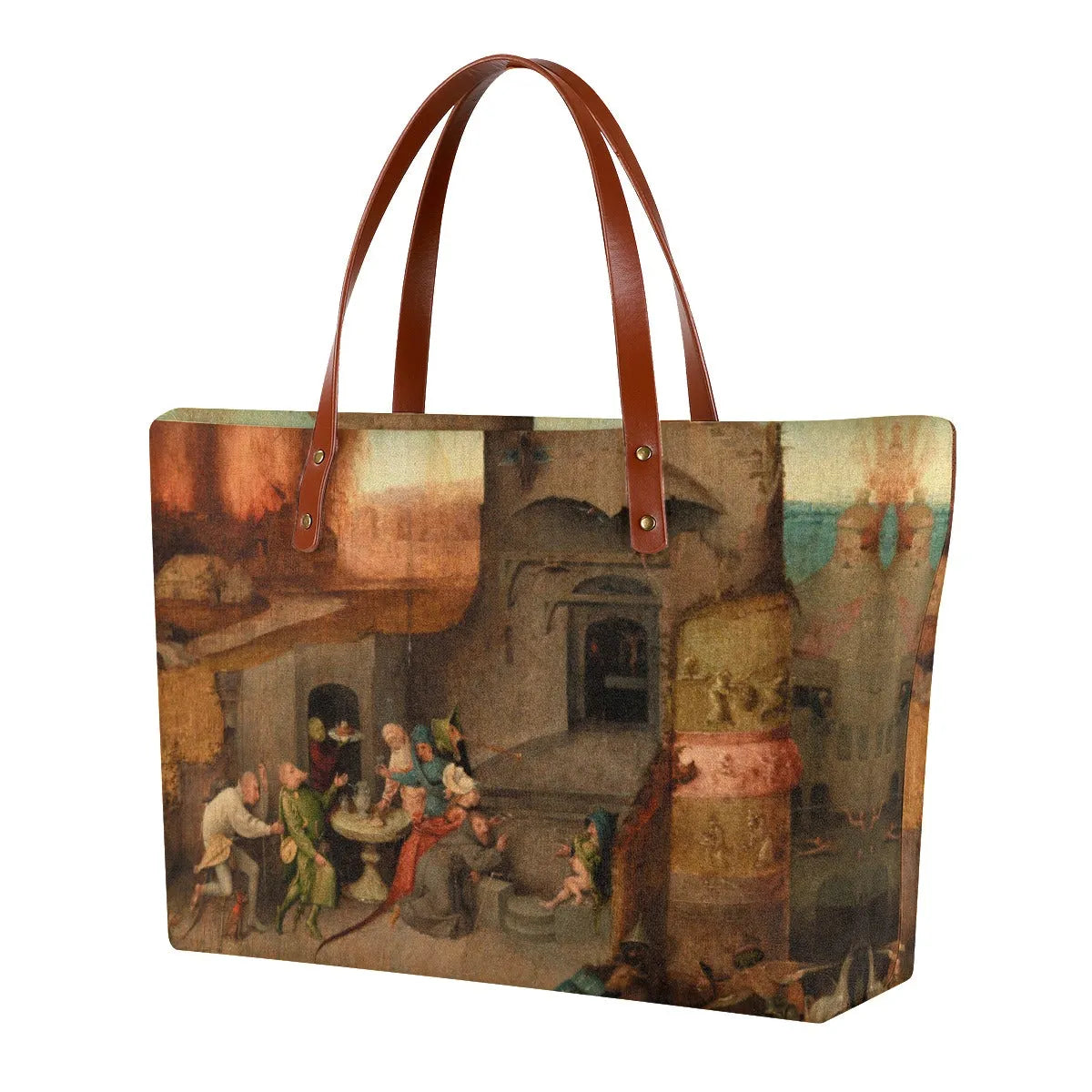



Temptation of Saint Anthony by Bosch Tote Bag
Step into a world of artistic enchantment with our Temptation of Saint Anthony by Bosch Tote Bag. This remarkable accessory brings the captivating and surreal imagery of Hieronymus Bosch's iconic painting to life, allowing you to carry a piece of art wherever you go. Crafted from durable canvas, this tote bag seamlessly merges style and functionality, making it an ideal companion for your daily adventures.
Indulge your senses in the mystique of Hieronymus Bosch's masterpiece, "The Temptation of Saint Anthony." As you carry this tote bag, you're not just holding a bag; you're embracing the spirit of curiosity and exploration. The intricate scenes depicted on the bag's surface invite you to dive into the depths of imagination and symbolism, sparking conversations and connections wherever you go.
- Made of Diving Cloth
- Waterproof Fabric
- Large capacity
- Black zipper and Lining
- Brown strap
- Double-sided Famous Painting Art
Discover the surreal and enigmatic world of Hieronymus Bosch, one of the most celebrated artists of the Renaissance period. Here are more of Hieronymus Bosch's Famous Paintings.
About the artwork
We are aiming to have your order dispatched from our facility within 48 hours. However, please bear with us in case we are spending extra time in checking / perfecting your items, particularly during the peak season around end of the year. This does not include weekends or holidays.
Purchases made after 6pm PT will not be shipped out until the next business day. If you order after 6pm PT on a friday, your order will likely be shipped out on the following monday. For more information click here.
We provide a return policy, allowing customers to return products within a specified timeframe if they are not completely satisfied. For more information click here.
We offer a range of secure payment methods, including major credit cards and debit cards such as Mastercard, Visa, and American Express. Additionally, we support digital wallets like Apple Pay and allow for seamless transactions through trusted platforms like PayPal. For more information click here.
Choose options




20% Off Everything - Limited time only.
Enjoy Free Shipping on All Orders!
